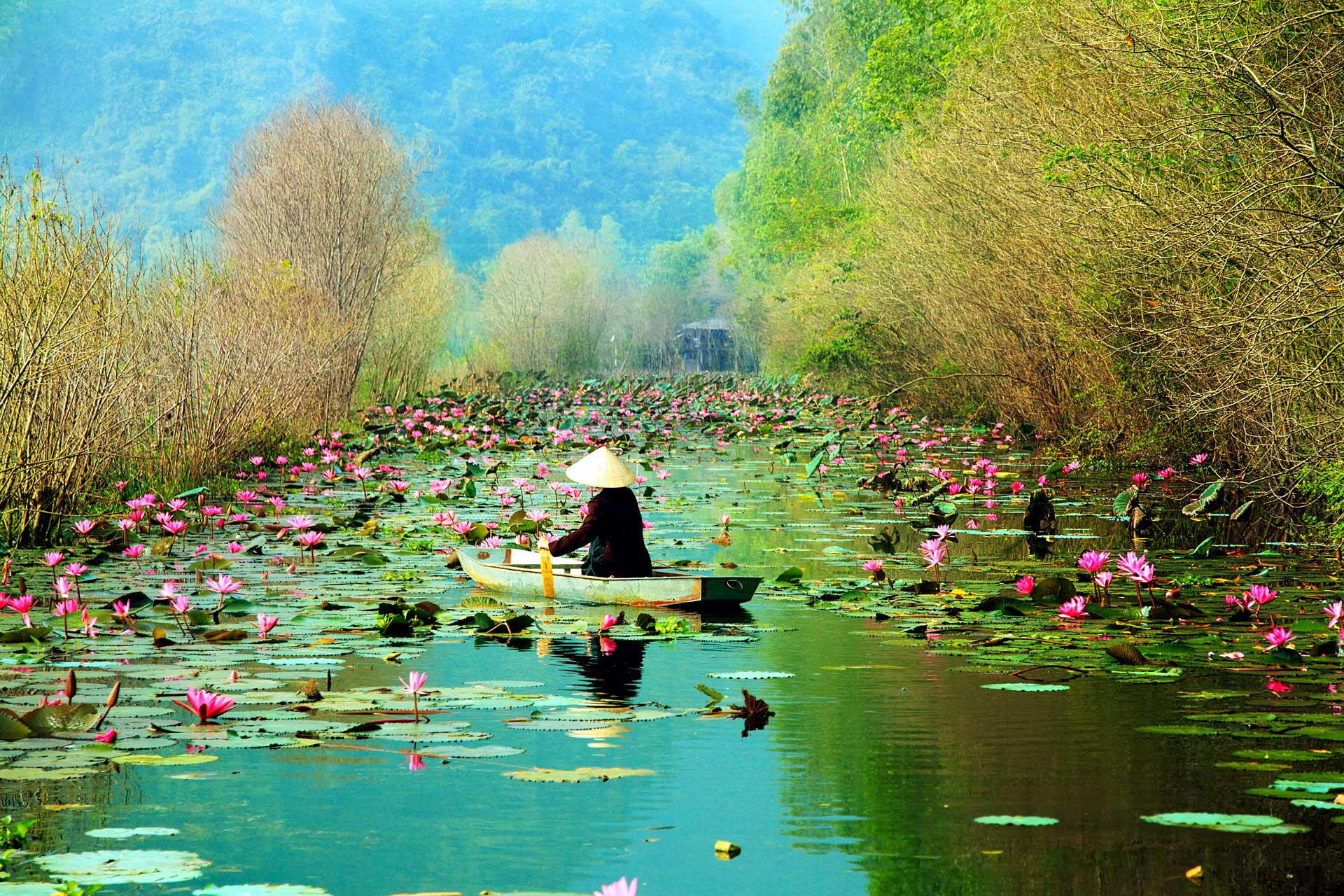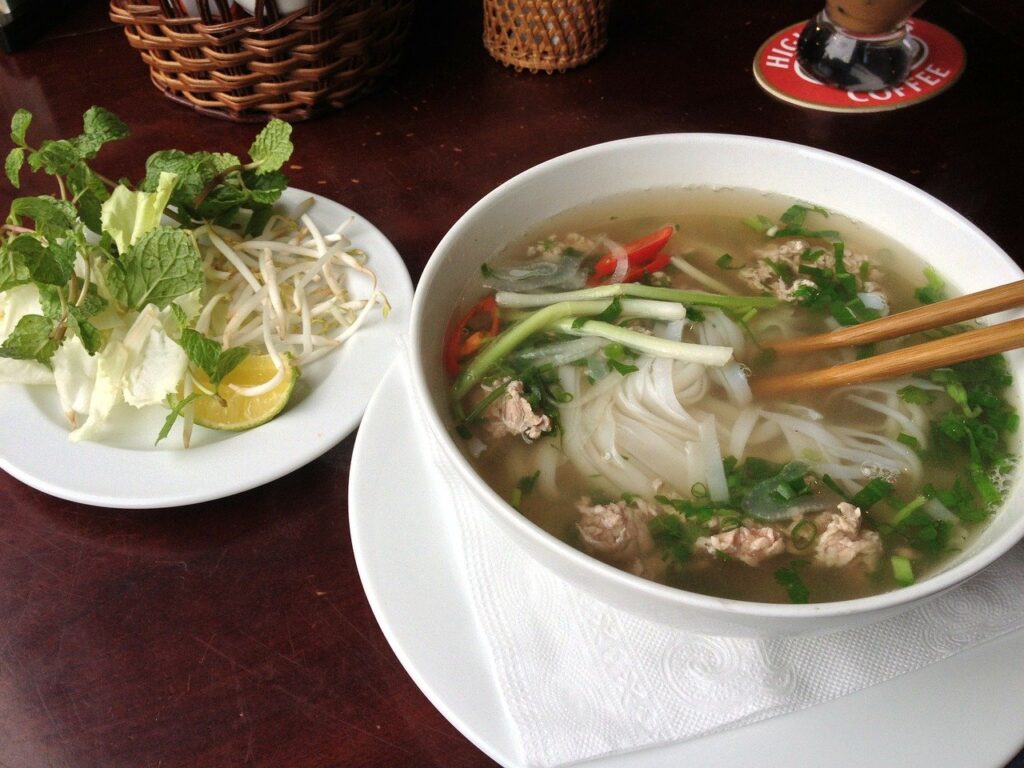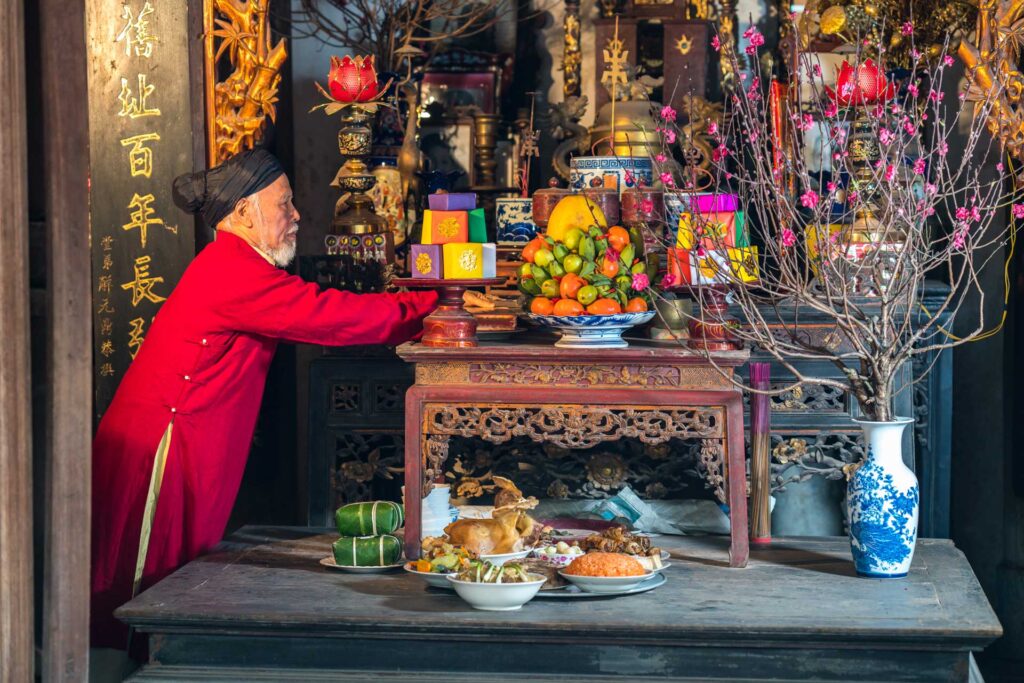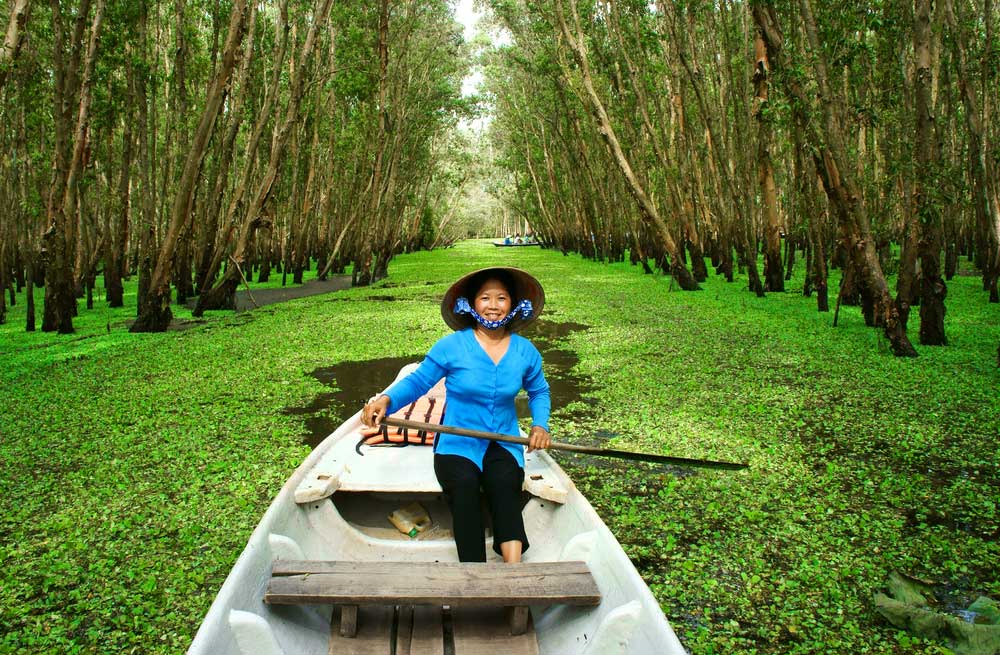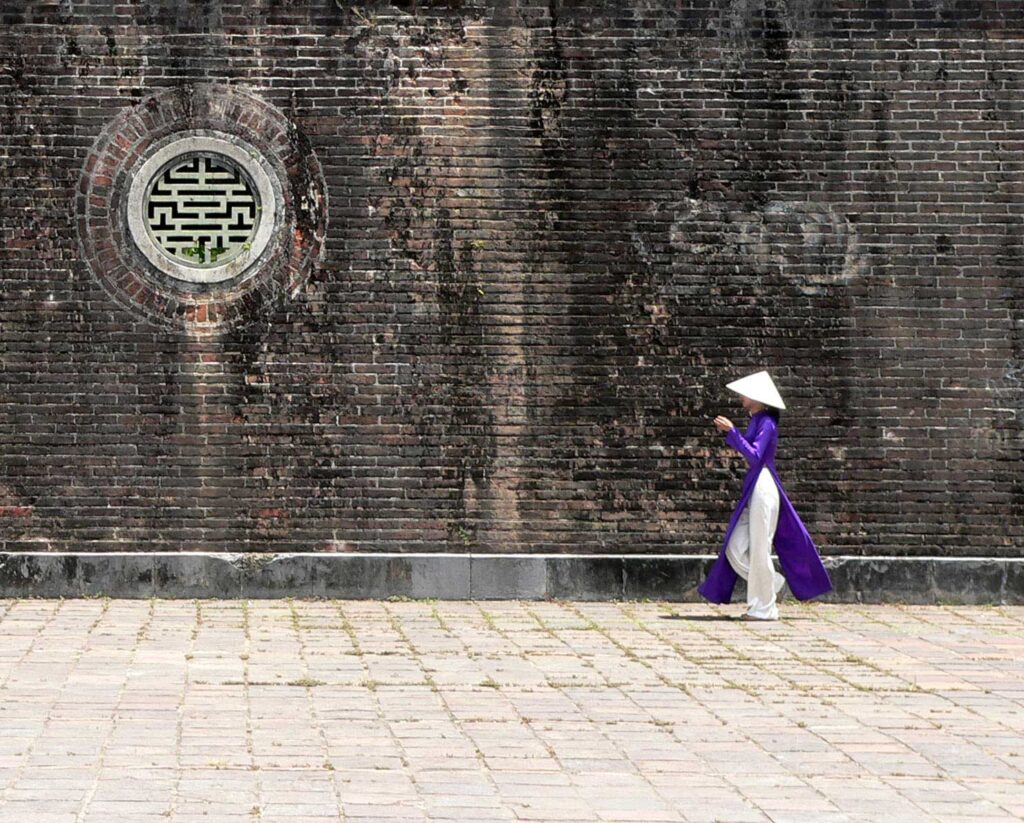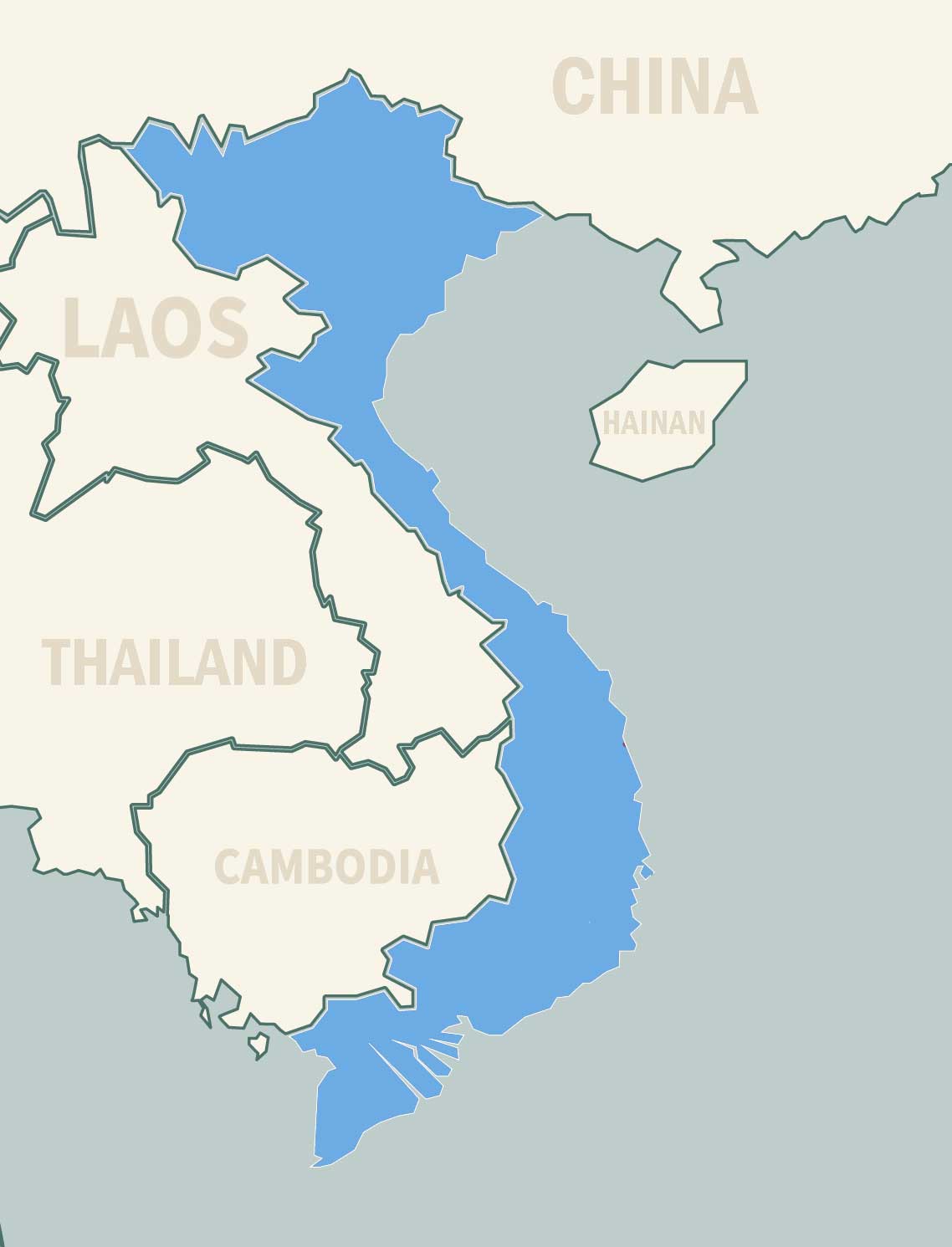Vietnam, has finally won its last battle, to capture the imagination of the travelling public. Elegant Hanoi now vies with its dynamic sister, Ho Chi Minh City (Saigon) for the attention of visitors drawn by the eclectic mix of old and new. More modern than other Vietnamese cities, Ho Chi Minh City has also retained its French colonial influences. Its vibrancy is maintained by the ever-entrepreneurial Saigonese and the streets are jam-packed with mopeds and scooters, often carrying whole families. The markets are chaotically busy
Elsewhere, the scenes are timeless. Early morning on the Mekong Delta brings the daily floating markets where fruit and vegetables are peddled.
Everywhere the green patchwork of rice paddies stretches into the distance, broken only by the silhouette of water buffalo and farm workers wearing conical hats bending down to tend the young plants. The soaring mountains in the north of the country tower over tiny villages where life continues much as it has done for centuries, with traditional costumes still proudly worn. The old French hill stations have survived throughout the country offering a welcomed respite from the heat. And, in the South China Sea, the 3000 chalk islands in Ha Long Bay are not to be missed. The ancient former imperial capital, Hue, takes you back to a time of concubines and eunuchs.
The conquest of Vietnam by France began in 1858 and was completed by 1884. It became part of French Indochina in 1887. Vietnam declared independence after World War II, but France continued to rule until its 1954 defeat by Communist forces under Ho Chi Minh. Under the Geneva Accords of 1954, Vietnam was divided into the Communist North and Anti-Communist South. US economic and military aid to South Vietnam grew through the 1960’s in an attempt to bolster the government, but US armed forces were withdrawn following a cease-fire agreement in 1973. Two years later, North Vietnamese forces overran the South reuniting the country under the Communist rule.
Despite the return of peace, for over a decade the country experienced little economic growth because of conservative leadership policies. However, since the enactment of Vietnam’s “doi moi” (renovation) policy in 1986, Vietnamese authorities have committed to increased economic liberalization and enacted structural reforms needed to modernize the economy and to produce more competitive, export-driven industries which have resulted in rapid economic growth in the last decade.
The present constitution asserts the political supremacy of the Communist Party of Vietnam. In Jan 2011, the party chose a new Secretary General is Nguyen Phu Trong. Trong is one of the triumvirates that now govern Vietnam along with Prime Minister Nguyen Xuan Phuc and President Tran Dai Quang.
Under the Geneva Accords of 1954, Vietnam was divided into the Communist North and Anti-Communist South. US economic and military aid to South Vietnam grew through the 1960’s in an attempt to bolster the government, but US armed forces were withdrawn following a cease-fire agreement in 1973. Two years later, North Vietnamese forces overran the South reuniting the country under the Communist rule.
Despite the return of peace, for over a decade the country experienced little economic growth because of conservative leadership policies. However, since the enactment of Vietnam’s “doi moi” (renovation) policy in 1986, Vietnamese authorities have committed to increased economic liberalization and enacted structural reforms needed to modernize the economy and to produce more competitive, export-driven industries which have resulted in rapid economic growth in the last decade.
The present constitution asserts the political supremacy of the Communist Party of Vietnam. In April 2001, the party chose a new Secretary General in Nong Duc Manh. Nong is one of the triumvirates that now govern Vietnam along with Prime Minister Nguyen Tan Dung and President Nguyen Minh Triet.
GOVERNMENT
The present constitution, promulgated in 1992, asserts the political supremacy of the Communist Party of Vietnam. The 496-member National Assembly is responsible for legislation. The Assembly is elected every five years from candidates proposed by the CPV. Executive power is exercised by the Council of Ministers. The assembly elects a president, who acts as head of state an also appoints a prime minister from among the members of the Assembly. The prime minister leads the Council Ministers, the members of which hold executive power. It is a Social Republic since 1980 and it gained independence from France in 1954.
Vietnam borders the Gulf of Thailand, Gulf of Tonkin and the South China Sea. The country shares borders to the north with the People’s Republic of China and to the west with Laos and Cambodia. The land is principally agricultural with a central tropical rainforest. Extending 1,650km from north to south, Vietnam is only 50km across at its narrowest point.
There are no good or bad seasons to visit Vietnam. When one region is wet, cold or boiling hot, there is always somewhere else that is sunny and pleasant. Because of its geography, stretching 1,650km from north to south and from sea level to mountain…
The south has a wet season from May to November, the wettest months being from June to August, and the dry season from December to April. The wet is characterized by high humidity levels and a refreshing afternoon downpour. Humidity in the South during the months of June and July ranges between 75% and 85%. The hottest months are from March to May, with temperatures well over 30 degrees Celsius.
The central coast is dry from May to October and wet from December to February. The highland areas are significantly cooler than the lowlands, and temperatures can get down to freezing in winter. The North has cool, damp winters from November to April and hot summers from May to October. The months of December and January can be particularly cool with temperatures as low as 8 degrees Celsius. Temperatures can drop to 0 degrees Celsius in Sapa in winter, and there is sometimes snowfall.
There is the possibility of seeing typhoons between July and November, affecting the north and central areas.
Vietnam’s traditional religious background is based on three great philosophies and religions. These are Confucianism, Taoism and Buddhism that coexist with a more ancient but still thriving mother worship cult, ancestor worship, popular beliefs, superstitions and ancient Vietnamese animism. It is rich and finely balanced amalgam that permeates not only the spiritual side of Vietnamese life (most will say they are Buddhists) and their understanding of the universe (taken from Taoist philosophy) but also regulates family and civic duties (which is the main focus of Confucianism).
Although religious identification is not such a clear-cut matter, statistics tell us that about 70% of the population are Buddhist, 10% Catholic, 3% Cao Daist, 2% Hao Hao and the rest of various other religious groups such as Protestantism, Islam, Hinduism and the specific beliefs of some minority ethnic groups. As far as individual beliefs are concerned, especially those of foreigners, Vietnam has to be one of the most tolerant societies. Actually, most Vietnamese couldn’t care less if you believe or what you believe in and will not try to convert you to their own sets of beliefs.
Vietnam has its own characteristics, quite different from its neighbours, including China. Vietnamese like to think they are very unique… that’s because they are! Please accept the fact that you are a guest in Vietnam and always will be. You will experience what it feels…As such, you’ll enjoy special status but also have special responsibilities. Do try to learn as much as you can about the culture before you depart, and be considerate of the cultural differences you will experience.
The Vietnamese will highly appreciate your efforts to understand them, their culture, and their language. If you are up for a culture shock then Vietnam is the place to be.
Do realize that the Vietnamese have a very different perspective on social, political and business organizations, most of which are modelled on the extended family concept. It would be difficult in fact to overestimate the importance of family and the extent to which the family model is present at all levels and in all social and professional structures. Don’t be offended if newly made friends poke into every detail of your personal life. They are in fact helping you become part of a Vietnamese group. Understand that family matters are paramount and unexpected family responsibilities will take precedence over appointments and activities scheduled previously. In general, don’t judge what you cannot understand. As always, respect is the key word here.
You should show respect in general, as it will usually be shown by most Vietnamese in most situations. Don’t lose your temper; it is first seen as a lack of respect for yourself and a strong sign of disrespect for your counterparts. Nevertheless, although in many ways a very polite and courteous lot, you may sometimes find people in Vietnam to be quite rude by your own standards. For example, in Vietnam queuing is pointless, queues and orderly lines simply don’t happen. Also, don’t be offended by personal questions and remarks, people will often ask nosy questions like: how old are you? Where are you going? Why are you late?
